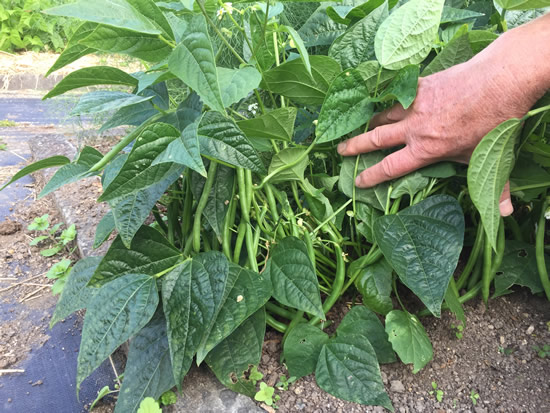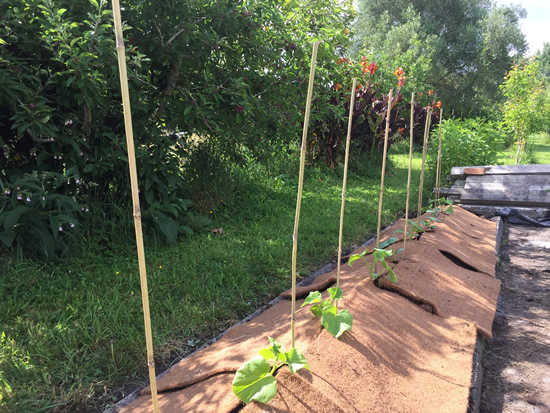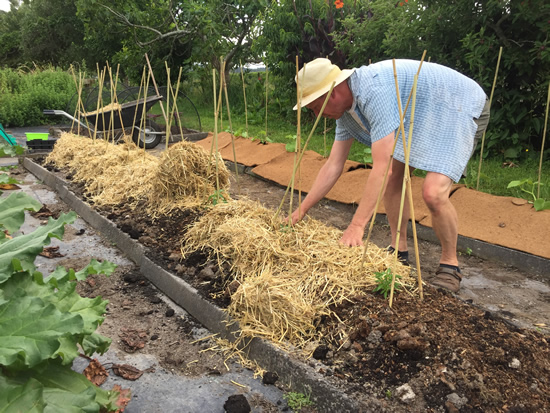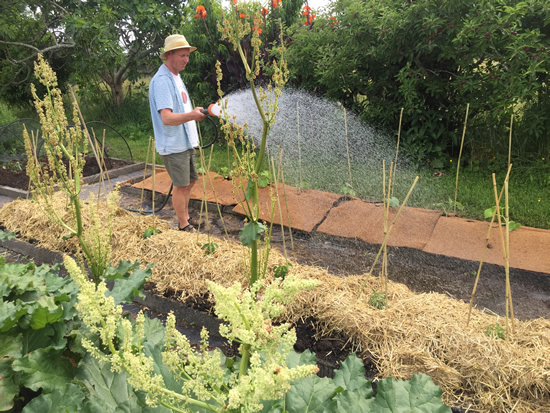
We’re enjoying the Xera dwarf beans we planted a few weeks back, but due to the wide range of conditions so far this summer, I’ve held off planting out my cucumbers and chillis until later than usual. Both like consistent warm soil conditions and sunny days to thrive.
Both these crops are planted into beds to which we’ve added lots of organic matter in the form of compost. This not only makes the soil more friable and aerated, but also helps hold moisture and feeds the plants. A side dressing of chook poo and volcanic rock dust and it’s ready to plant.

I’ve planted a variety of cucumbers – the easy-to-grow Lebanese type which are sweet and crunchy, the old-fashioned apple cucumber for great flavour and a few gherkins to make pickles – way too much for a single family but any excess can be given to friends and neighbours.

I’ve used coconut matting as a mulch. This helps retain moisture, suppresses weeds and helps keep the fruit off the soil. It’s a good idea to place a stick at the base of each plant so you know where the roots are to water once they spread out.

The capsicums and chillis are planted in similarly-prepared soil. I love growing the bull horn type capsicums. They seem easier to grow than the blocky types and produce a good crop every year.

After planting, it’s best to stake each plant with 2 or 3 bamboo sticks in teepee style. The plants get quite heavy with fruit and if you don’t stake them, they can fall over in the wind. If you do this at planting time, there’ll be less chance of root disturbance.
Finally, add a good covering of mulch and water in well to give the plants a good start. Both these crops are easy to grow and don’t usually suffer from pests. However, my local pukekos enjoy pulling out the plants as soon as they can, so I have to hoop and net them until they’re established.


Happy gardening over the holiday period!
From Rob, Jan and the Team at OEG
Website designed by www.thecornerstorecollective.com
Developed by Richard Hpa